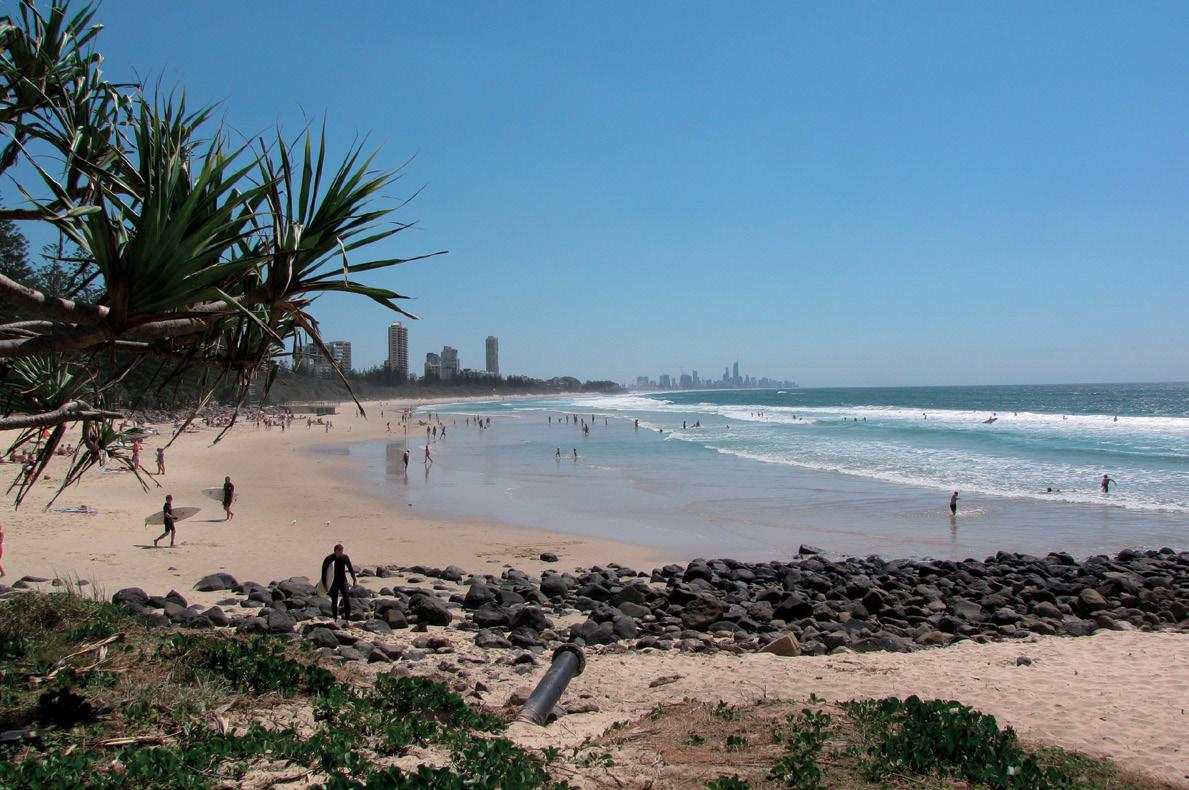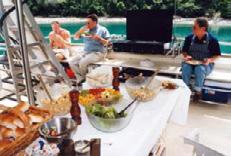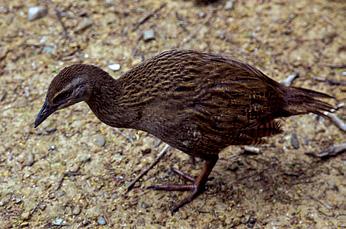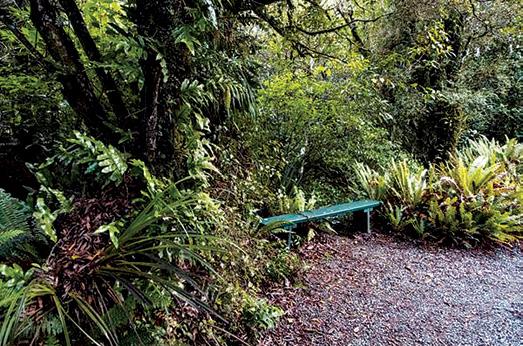
22 minute read
Lockdown Activities
With everyone staying in their bubble during the lockdown, our local streets have more people walking and cycling for physical activity and getting to the local supermarket.
Communities across the country have found creative ways to encourage more local physical exercise.
Advertisement
The placement of teddy bears, and later Easter egg pictures, in windows as a form of physically distant scavenger hunt have been fun for big and little kids alike. Many have used chalk on the ground to draw pictures, write words of encouragement or develop obstacle courses for local residents.
If you’ve doing anything active in your neighbourhood to encourage exercise, like walking etc, using our currently quiet streets, please share your story with us. Just email walkingnz@xtra.co.nz with a story from say 100 words with one image and if published you could win a free six month subscription or extension to Walking New Zealand magazine. Include your name and postal address.
Here are what some readers have been doing during the lockdown.
Walk and biking around Papamoa
Most mornings we start our day by biking down the waterways in Papamoa. We are lucky to have a 24 km circuit of shared walking/ biking trails.There’s always something different to see.
Because there are so many well marked exits, it is easy to combine a beach walk with part of the trail.
For the past month there have been so many people enjoying the beach, and these trails, each in their own little bubble and often with their dog.
Let’s hope it continues.
From Barbz Lower, Papamoa
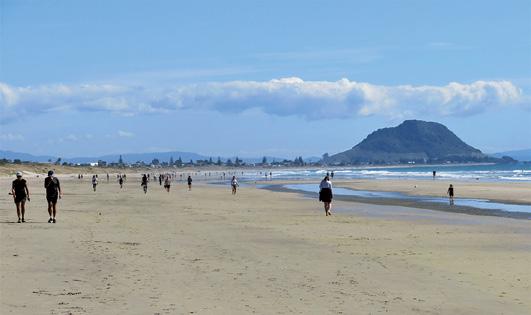

Training up Mt Wash-ington Thanks for this issue, it’s great to have something to read while we’re in our ‘bubbles.’
I thought you might get a laugh out of what I’ve been up to since our season finished early - Not everyone has a mountain in their bubble, so I’ve been keeping up the pack training in the back yard with twice daily ascents of ‘Mt. Wash-ington.’
From Cathy Taylor, Walking Legends Guided Walks, Te Puke. Your favourite walk or bike ride could win you a free subscription We are looking for readers’ favourite New Zealand walks. or bike rides Many of us go out regularly walking on a route which we class as our favourite, for a number of reasons. Perhaps because for it’s scenery, it’s safe, it’s challenging, it’s flat, it’s hilly, it’s varied, or for whatever reason. We would like you to tell us in your own words what is you favourite walk or bike ride and why. Email us a story from say 250 up to 1200 words including a photo or photos. We will now give you a FREE subscription (six months or more, depending on the article), or extension to Walking New Zealand magazine for walks published. You can also post an article to Walking New Zealand, Freepost 78863, P O Box 1922, Palmerston North, or fax 06-358-6864. If sending a photo by email please make sure photos are in high resolution.
Our email address is: walkingnz@xtra.co.nz.
Please put “My Favourite Walk” in the subject line and include your name and postal address.
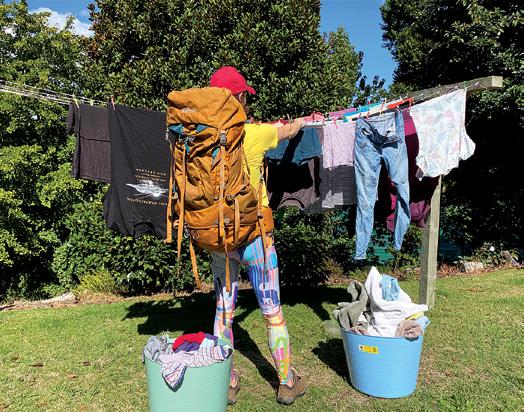

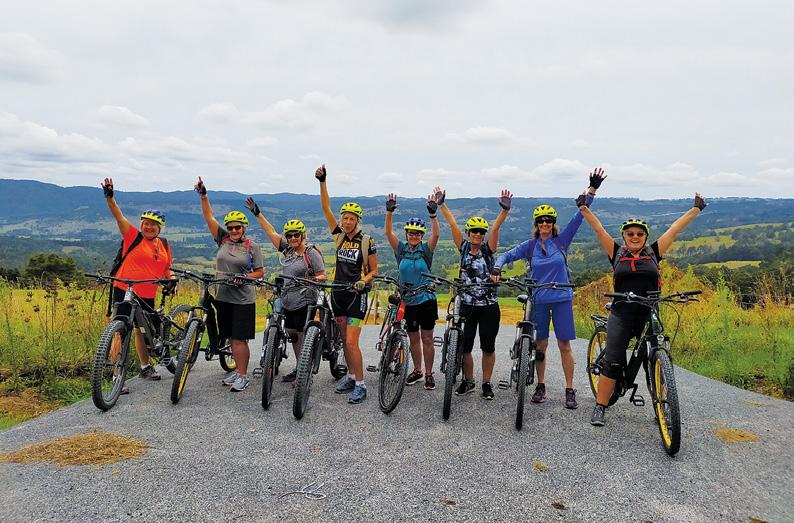
The Old Chook’s Tour
of Northland Above: What a view in the Bay of Islands! Below: Incredible views from cycling on our ebikes. A n adventure of a lifetime always starts with anticipation, a pinch of the unknown, an excitBy Tracy Mackey ing unusual experience, and not really knowing the outcome. I was very fortunate to host the Old chooks on our tour immersing ourselves in Northland’s history, culture, sampling local delicious produce and exploring its hidden treasures. The Old Chooks arrive in Paihia, Bay of Islands and enjoy the luxury of Edgewater Apartments set on the waterfront. The next day they set off on their timeless adventure by catching a boat out to the wildlife sanctuary of Urupukapuka, one of the seven pest free islands of Ipipiri,
situated in the Eastern Bay of the Bay of islands.
We were welcomed with the wonderful sounds of the many species of birdsong, and the endless flutter of the tuis wings as they sailed past us.
We trekked our way through some of the most prime real estate for the re-introduced native bird species, such as the curious toutouwai [North Island robin], bronzed beauty tieke [saddleback], the cheeky popokotea [ whitehead] , and the sensational birdsong of the tui.
Our mission was to spot the elusive, very rare, but incredible beautiful kakariki [native green parakeet] and it lived up to its expectation. This spectacular bright red green parakeet, and with the other rare species delighted us with their presence, cruising in and interacting with us, such a treat.
We came out of the bush to Paradise Bay, which certainly lived up to its name with a delightful picnic lunch freshly made from local produce, then a swim in the tranquil waters.
Leaving this behind we made a small detour to the see the brown teal duck, before tackling the hike up the endless steps and overlooking sheer cliff drops to take in the spectacular views looking out across the Bay of Islands.
The day ended watching the sunset overlooking the water sipping a well-deserved drink, contemplating how wonderful our day was, and indulging in the outstanding feast of local delicacies from the deck of the Iconic Duke of Marlborough in Russell. Just Magic.
The next day, was like stepping back in time. So tranquil and peaceful following the Waikare Connection River Trail, Russell Forest section of the Te Araroa Trail.
The native bush forest there is flourishing, seemingly undisturbed and untouched for hundreds of years. Magnificent old kauri, puriri, totara trees and nikau palms make this walk outstanding.
Getting our feet wet, this track twists and weaves its way along the river, climbing over, through and around boulders, trees and rocks following the natural course of the river. stunning, and teaming with native bush and wildlife. A well-kept northland hidden treasure.
Another wonderful end to the day, sampling some of the delicious local delicacies and wine,
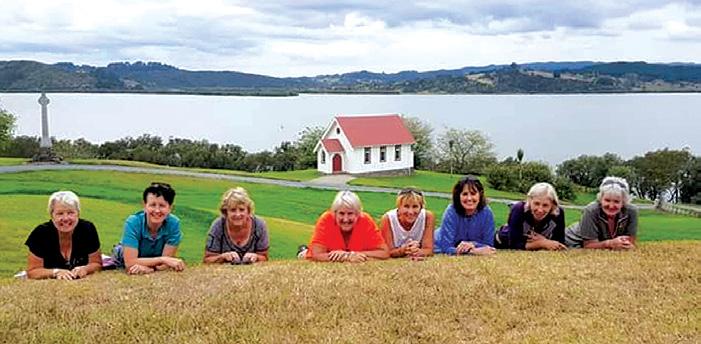
Above left: At the Maungungu Mission at Horeke. Above right: Wandering through the Wairere Boulder at Horeke.
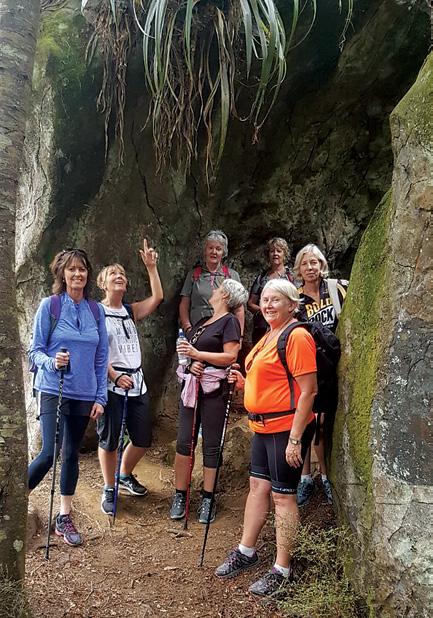
buzzing from our days adventure, at the lovingly restored old establishment Left Bank Hotel in Kaikohe.
Our last days adventure we traded our hiking shoes briefly, for electric bikes to sample a leg of the Pou Herenga Twin Coast Cycle Trail.
For most of the group this was their first time on electric bikes, let’s just say they just loved them and had such a wonderful day cycling some of the most spectacular, off the beaten track, sights that only Northland can offer. Taking in the stunning views on this off road trail, traversing down valleys and following the riverbanks before stopping for a picnic lunch
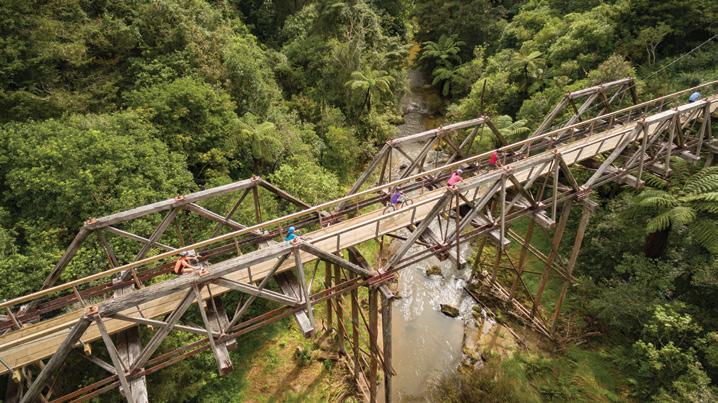
NORTHLAND EXPERIENCES Unique biking and hiking tours
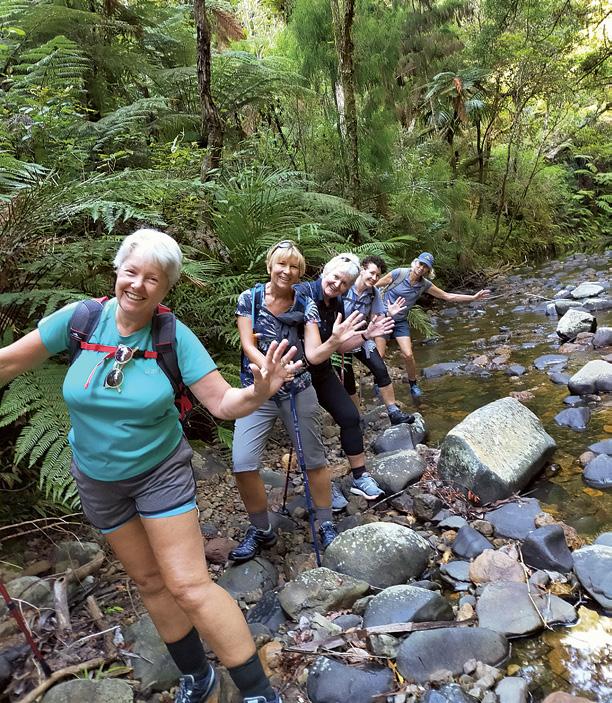
The Old Chook’s Tour of Northland Above left: Cycling the Pou Herenga Tail Twin Coast Cycle Trail. beside the river. Then back on the Mission House on the Horeke Above right: Always smiling! bikes to traverse along the gravel backroads before cruising along Harbour. This was the largest signing of the Treaty of Waitangi, I was lucky enough to share this experience with a wonderone of Nz’s longest boardwalk with over 3000 chiefs present, also ful group of eight ladies calling over the mangroves, finishing at the picturesque place that time has forgotten, Horeke, on the Hokianga Harbour. a magnificent viewpoint. Our last night we found ourselves in the unique House over the Water sitting out over the themselves the ‘old chooks’. We have shared some memories of a life time, from helping each other over the obstacles, to
Later in the afternoon, we Hokianga Harbour where we the many laughs, I thoroughly explored the unique geological phenomenon of Wairere Boulders. A wonderful unique privately owned farm who has relaxed and happy, sitting on the deck over the water, reflecting on our astounding adventure, and sampling the chilled wine and enjoyed their company and I have made new friends to share many more adventures with. A great escape exploring our untouched created a walk which allows inlocal cheese before heading over by time landscape, wonderful teraction without deterring from the ecological restoration of the native forests and bushland. This native bush walk celto New Zealand’s oldest surviving pub, Horeke Hotel. Whilst indulging in succulent pork belly, and delicious thick company, stunning food and meeting some colourful locals all put together in one Northland Experience package. Thank you old ebrates the native subtropical juicy steaks from local farmers, chooks I had a blast with you all! habitat, alive with the songs of bird and lush with vegetation narrow pathways through the basalt rocks carved by nature. we listened to all the colourful local tales, stories and entertaining characters brought to life by the publican. A world that time Northland Experiences have an all-inclusive 5 day cycle trip that runs weekly, cycling from coast to coast. Or you can create Afterwards, we finished this trek left behind and a fitting end to a bespoke tour of just walking sampling the farmer’s home cooked delicious treats. Our last stop for the day was at the magnificent Mangungu our adventure sipping drinks, laughing, and watching the spectacular sunset over the Hokianga Harbour. or cycling or a mix as the Old Chooks did. www.northlandexperiences. co.nz
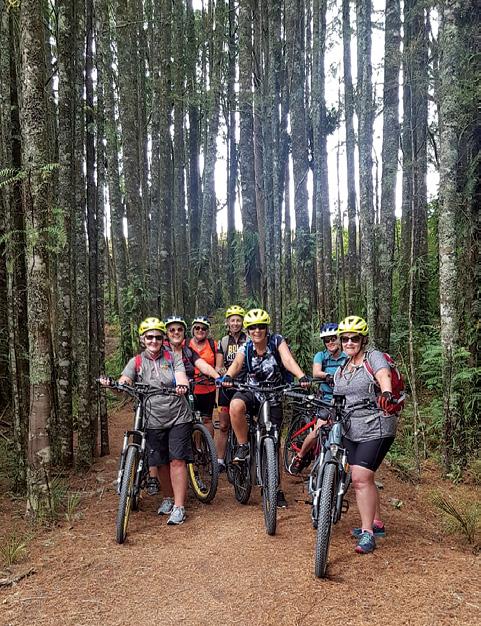
NEWS
A billion-dollar opportunity for walkers
Budget 2020 has opened some exciting opportunities for tracks around the country.
Walking Access Commission chief executive Ric Cullinane says if New Zealanders use Budget funding wisely it will be a major step towards a comprehensive nationwide network of tracks. By Stephen Day The Government plans to spend $1.1 billion to create 11,000 green jobs in the hope of jump-starting “a sustainable recovery” from the COVID-19 crisis. The package includes: * $433 million for new jobs in regional environmental projects * $315 million biosecurity, including weed and pest control * $200 million for the Department of Conservation’s Jobs for Nature Fund * $154 million for new jobs enhancing biodiversity on public and private land
While none of that spending is for public access to the outdoors, much of it will rely on good tracks and trails to succeed. All those people removing weeds, cleaning waterways and saving birds will need to walk into the wild to do it.
And, symbiotically, New Zealand’s tracks will be better as a result. Walkers, bikers, horse riders and other outdoor recreationists will hopefully have access to land that has fewer pests, cleaner waterways, and more native animals.
Walking Access Commission chief executive Ric Cullinane says there is a close relationship between many of the people who enjoy our outdoors and those who care for it.
“The people who tramp or mountain bike New Zealand’s amazing trails are often the same people who volunteer their time to protect and enhance our environment,” says Cullinane.
The government has also said that part of its COVID-19 recovery plan is to invest in ‘shovelready’ infrastructure projects. The Walking Access Commission, as well as many local authorities and other agencies, have been working to make sure that that list of shovel-ready projects includes new walkways, bike paths and public access opportunities to the outdoors.
“Building a network of trails will stimulate the economy for a few years,” says Cullinane. “But after we build them, they will still contribute to the economy. Good tracks bring visitors and tourists, they improve people’s mental and physical health, and they build stronger more connected communities.”
He also notes that building and maintain tracks is an investment in the whole country — north and south, urban and rural, rich and poor — because every town and district has tracks.
The Walking Access Commission Ara Hīkoi Aotearoa will receive an extra $1.8 million for each of the next two years — double its existing funding of $1.8 million.
This funding increase follows an independent review of the Walking Access Act 2008 which recommended an increase to the Commission’s funding. The review noted that the Commission’s funding, which had not increased since it was set up in 2008, was minuscule. It also found that people involved in recreation, the primary sector, te ao Māori and local government all valued the Commission’s work.
Cullinane says the review showed widespread support and appreciation for the Commission’s work.
“Without this extra funding, we would have needed to cut our work alongside community trail building groups, councils and other partners. This work includes creating, improving and promoting tracks, trails and other forms of public access to the outdoors for walkers, cyclists, horse riders, hunters and anglers.”
With luck, a well-resourced Walking Access Commission can use this nationwide focus on the outdoors to help local communities build a growing network of tracks and trails.
Above: A new loop track extension by the Hokitika Gorge in Jan 2020. Photo by Inger Perkins
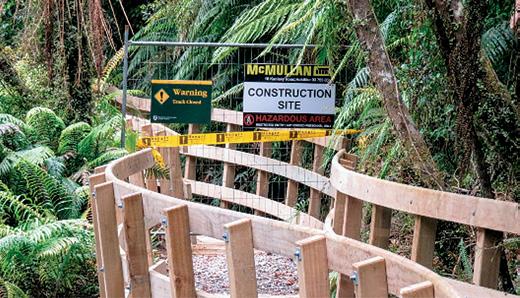
We are looking for the best digital photos each month depicting walking
Now the time to get your digital camera out or look through your digital images and enter the
Walking New
Zealand
Digital Photo
Contest
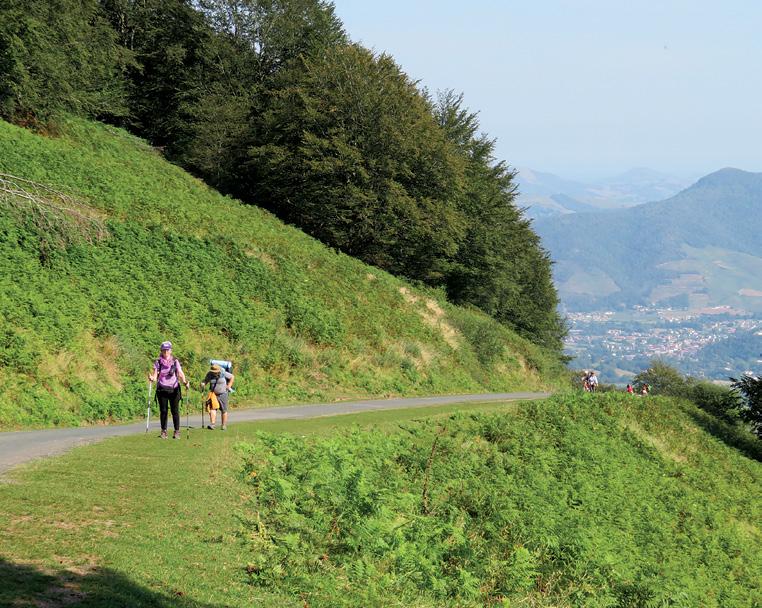
The image could be a scenic scene, a walk on the beach with the dog, a bush walk, a street walk or anything walking that takes your fancy. The rules are simply: there must be a person or persons walking in the picture either front, side or back on, and can be in the distance. We require an emailed image in high resolution mode, in jpeg format as an attachment, and NOT embedded in Word or in the email, and NOT a
link to a website to be downloaded.
The subject line must have the words “Walking New Zealand Photo Contest” and the email must include the NAME, POSTAL ADDRESS and phone number of the person who took the photo and a small caption. In this contest ONLY ONE emailed photo accepted per month. Entry in the contest automatically allows us to print the image. The person who has their photo published will receive a six month subscription or a renewal to Walking New Zealand magazine of six months. If a picture is chosen for the cover page the person will receive a 12 month subscription or renewal.
Email your entries to: walkingnz@xtra.co.nz with subject line “Walking New Zealand Photo Contest” Only EMAILED entries will be accepted.
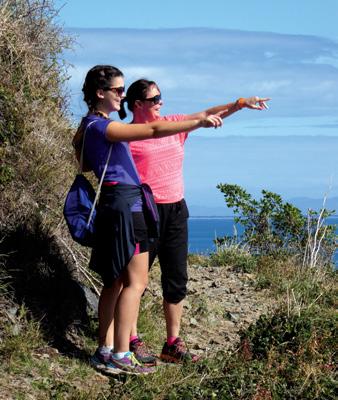
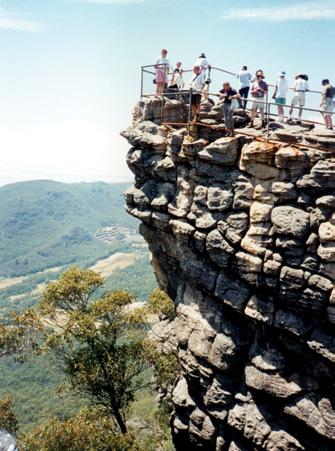
Monthly Photo Contest
Above: Day One on the 800km El Camino de Santiago, the toughest of the 40 days, leaving St Jean Pied de Port in France, heading up the relentless Pyrenees mountain range (1,427 metres), towards Roncesvalles in S pa i n , 2 4 k m away. Photo b y L o r r a i n e T h o m s o n , Auckland.
B e l o w l e f t : D a ve a t 8 8 f l e x e s h i s muscles with a Nikau Palm on the bush walk to the Bridal Veil Falls near Raglan. Photo by Vicky R o s s , R e d Beach.

Opposite page a b o v e : G i l l Green on the Te Paki Trail Northland Diana Ward, Pt Chevalier Auckland.
Right: Walking through the river on the Oroua Farm Walk on David Grant’s farm. Photo by Cynthia Steiner, Fairbanks, Alaska. Below right: Crossing the bridge on the Totara Reserve Fern Walk. Photo by Barbara Gillespie, Linton Below left: Group amazed at the impressive landslide on the Oroua Farm Walk. Photo by Jay Raghavan, Wellington.

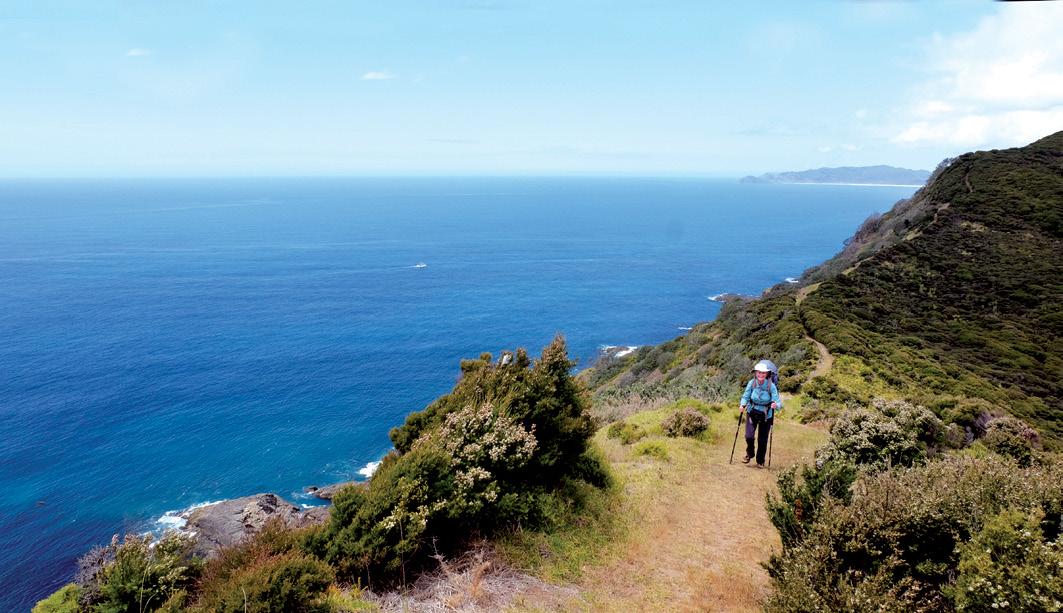
Manawatu Walking Festival Photo Winners

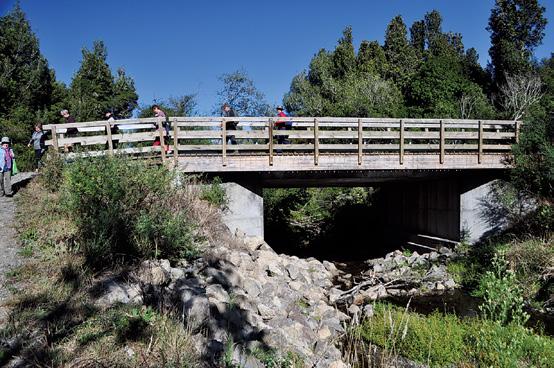
Mount Somers Track is a very popular 26 km circuit track located in the beautiful Hakatere Bookable huts Conservation Park, Canterbury. Due to the trail’s proximity to Christchurch and the relative ease of the walk, the 26-bed Woolshed Creek Hut and the 19-bed Pinnacles Hut were often the unwitting destinations of the ‘Weekend Surge’. This is best described as a frenBy Department of zy of keen-as trampers heading Conservation up the hill on a Saturday (as many as 60 people) hoping to secure a bed at the end of their hiking day. To help combat the weekend overcrowding and the resulting frustrations, the two huts were added to DOC’s booking system on 1 October 2019. Within eight weeks of the online launch, at the beginning of what the Geraldine based DOC staff consider to be their summer season, bookings were 173% higher than for the same period for the 2018-2019 summer. These projections were vali■ dated when the actual figure reporting was released earlier this month, confirming 729 visitors during January, up from 420 visiAbove top: The view down to Woolshed Creek Hut. Photo: Becs Crilly Above: Lead Hut Warden, Becs Crilly, managing wasp control. Photo: Becs Crilly tors in January 2019. This includes an increase in trail-runners, day
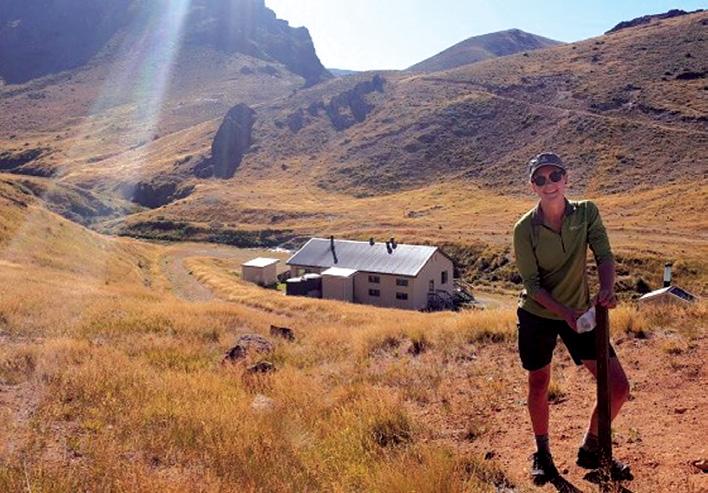
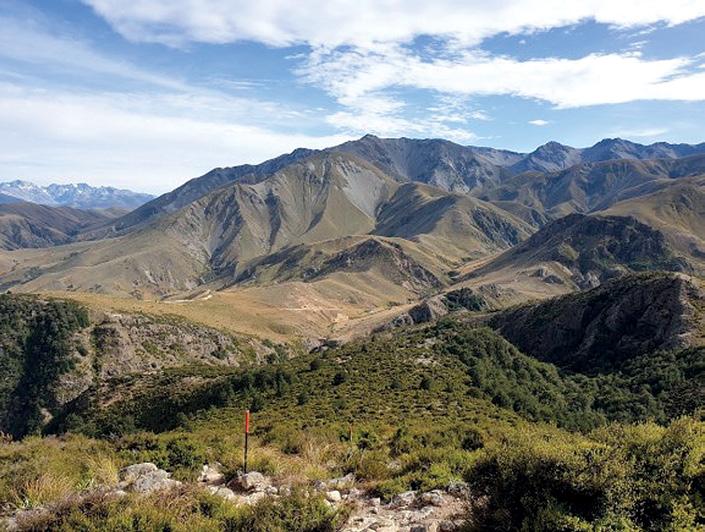
Subscribe or renew your subscription to Walking New Zealand today and you can save up to 22% off the cover price.
m 2 years (24 issues) $159.00 You SAVE 22% off cover price m 1 year (12 issues) $84.50 You SAVE 17% off cover price Subscribe today - just freephone 0800-925-546 NO POSTAGE NEEDED Just place in an envelope and post to: Freepost 78863, Walking New Zealand Ltd, P O Box 1922, ............................................................................................................................................... Name ............................................................................................................................................... Address ................................................................................................................................................ Town/City Phone m 6 months (6 issues) $51.00 Palmerston North 4410 m Payment enclosed m Visa m Mastercard DIGITAL m 1 year (12 issues) $29.00 or fax 06-358-6864 or email details to: walkingnz@xtra.co.nz Name on card ............................................................... Amt $ ................... Card No ............................................................................. Exp ...................
- a summer success
walkers and hunters utilising the area.
Staff have reported other notable benefits such as less jostling on the track, compliance checking is now much easier and record-keeping is significantly more accurate.
Rebecca (Becs) Crilly, nearing the end of her second summer season as the Lead Hut Warden for the area, echoes these benefits. “Having bookings has taken a lot of stress out of the warden role. We are able to spend more time with trampers, sharing information about the local area and interesting landmarks to visit while they’re walking.
Trampers are more engaged with us too, as we’re not perceived as ‘just compliance’ anymore. The interactions are a lot friendlier now”.
Working alongside a second Hut Warden and a bevvy of volunteers, Crilly stated that including the Mt Somers facilities on the booking system had been well overdue and the response from trampers to date had been one of “overwhelming joy”.
“Trampers are now able to pace their walk and enjoy the outdoor experience without the time pressures of needing to get to the hut first.
“They know they have a guaranteed bed at the end. There is clear signage at both entrance carparks informing people they have to book a bed before they head up, but we won’t ever turn anyone away either. We just make it clear that bookings will always get priority. There hasn’t been any issues so far this season.”
Both the Woolshed Creek carpark and the Sharplin Falls carpark have reception, providing www.walkingnewzealand.co.nz Abvove top: Mt Somers Track. Photo: Andy Osborne Above: A quiet Woolshed Creek Hut. Photo: Becs Crilly Right; Dads and Lads. Photo: Andy Osborne
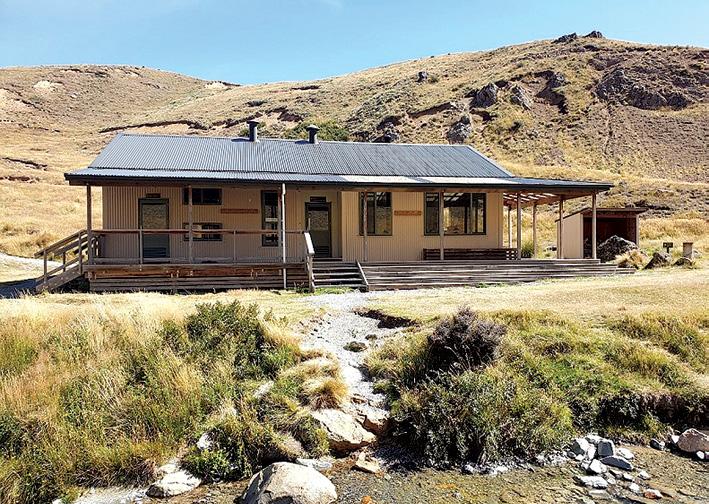
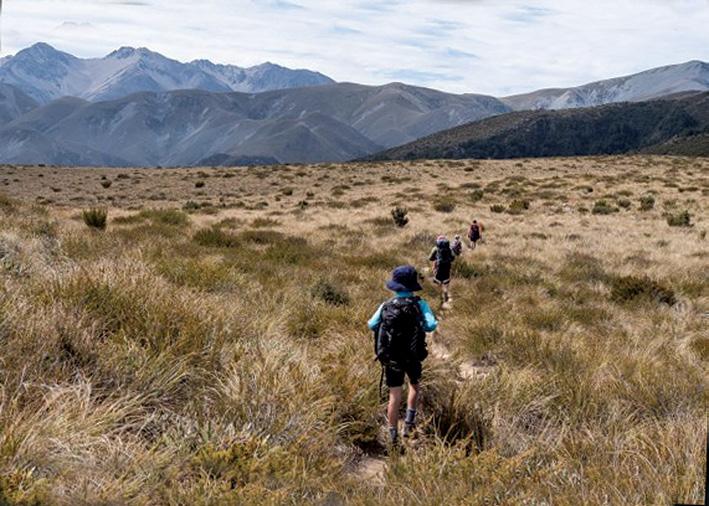
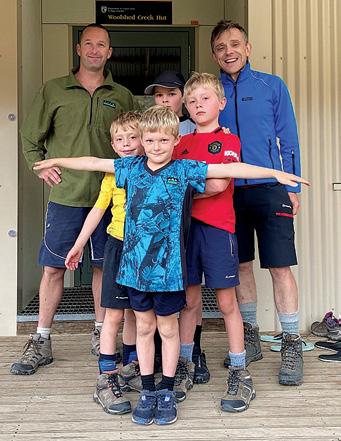
the opportunity for a booking to be placed from a mobile device. And further up the hill, Hut Wardens use their mobile devices to complete online check-ins, confirming exactly who is onsite.
As a direct result of having certainty of visitor numbers, Crilly says she has been able to gain some more structure and productivity from her days. She plans to be available at the Walking New Zealand, issue no 268 - 2020
Explore our beautiful botanical world

Discover the first-rate walking tracks and spectacular scenery at New Zealand’s national arboretum, a unique park sanctuary for all ages. Eastwoodhill offers over 25km of graded and marked walking tracks set amongst 13,000 exotic and rare trees, shrubs and climbers.
Bookable huts - a summer success
Immerse yourself in the beauty of our botanical wonderland and plan to stay - accommodation, self-contained campervan sites.
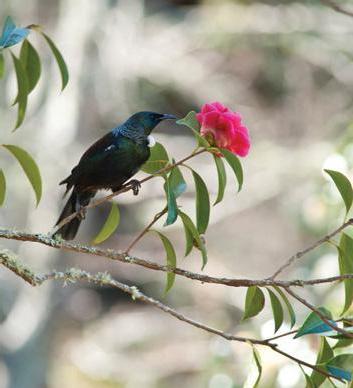
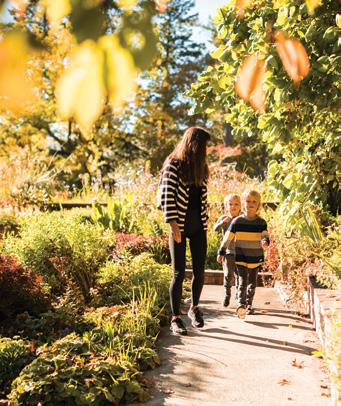
“A nature lover’s paradise” “This place is truly amazing” “A must see in autumn”
P: 06 863 9003 E: enquiries@eastwoodhill.org.nz A: 2392 Wharekopae Rd, RD 2, Ngatapa, Gisborne
www.eastwoodhill.org.nz
huts around the times walkers will start arriving and is able to schedule track maintenance activities for the quieter days.
When queried about the downsides of the booking system, Crilly reported very few. Some ‘Back Country Hut Pass’ holders are still learning the huts must be booked first although many are already familiar with the process for claiming their refund.
The booking system itself has some quirks too. There is currently no self-cancellation option, meaning folks who aren’t able to make the trip become ‘no-shows’, if they haven’t rung DOC to cancel. Sometimes there is a ‘sameday booking’ glitch when using a mobile phone to book from the entrance carparks, although this is resolved quickly by the wardens at hut check-in. Another feature Crilly is happy to utilise.
“We have noticed a shift in the demographic of people who are walking too. This walk is the perfect introduction to overnight tramping. Families have confirmed accommodation so they can travel with less gear, at a pace that suits them. Woolshed really isn’t the party hut it used to be.”
Following a recent ‘Dads and Lads’ tramp, Andy Osborne agrees with this comment. He and a family friend took their respective sons (aged 7 (just) to 11) for an overnight stay at the Woolshed Creek Hut.
“We knew that the hut needed to be booked prior and the system worked well. Everyone who was staying in the hut overnight had also booked, so there were no extras sleeping on the floor.”
Of the experience itself, Osborne said they walked in via Rhyolite Ridge, commenting it was “a bit tough for the boys with packs on” so they cooled off in the waterfall gorge swimming hole about 20 minutes from the hut, before heading back to the hut for the evening. “It was a great experience overall”.
DOC is continuing to improve the booking service it can provide to customers and in April all existing bookable campgrounds and huts, that sit outside the Great Walks, will transition to the new booking service.
More information is available from booking.doc.govt.nz.
Walking on
private land
You can see the river across the paddock. It looks like it might be a great swimming hole. But how do you get to it?
A common question that people ask the Walking Access Commission Ara Hīkoi Aotearoa is ‘can I walk across private land?’ The answer is no. There is no general right of public access across private land. This is different from many northern European and Nordic By Stephen Day countries. For instance, in Scotland, Finland, Iceland, Sweden and Austria people have what is known as the ‘right to roam’. They can wander on private land so long as they are not disrupting the landowner’s business, or exploiting the land for their own economic gain.
New Zealand has a culture of allowing people access to the outdoors and encouraging people to wander and explore – but we do not have a ‘right to roam’. Landowners have an exclusive right to their property, protected under the Trespass Act 1980.
But there are strips of public access land in New Zealand that adjoin private land that people can walk on legally. The most common of these are the 20-metre strips to the side of coasts, lakes and along rivers.
These public water margins, known colloquially as the ‘Queen’s Chain’, are incomplete. Generally, they are a mixture of marginal strips, formed and unformed legal roads, esplanade reserves and other public reserves. While you can walk along many water margins you can’t walk along all of them. The right to walk around the coast, above the foreshore, or beside a river or lake depends on whether a reserve exists.
Finding one of these strips might be your best chance of getting to that swimming hole.
One type of public access land that often www.walkingnewzealand.co.nz

adjoins private farms or forests is unformed legal roads (sometimes known as paper roads, because they are visible on paper but, being unformed, are not otherwise visible). You have the same legal rights on an unformed legal road as you do on a formed public road. The adjoining landowner cannot refuse you access across such a road.
But it is not easy to stick to an unformed legal road without wandering onto the adjoining private land. If you are unsure and there are no signs showing access, ask the landholder first.
Farmers may have valid reasons to deny access across their land. So you should accept refusals with good grace. If you have doubts, then you should check with the local council, DOC or contact the Commission. The Walking Access Commission mapping system shows unformed legal roads, marginal strips, esplanade strips and other areas of public access.
Many farmers I’ve talked to will happily grant access across their land if people ask politely first. Walking New Zealand, issue no 268 - 2020 23

